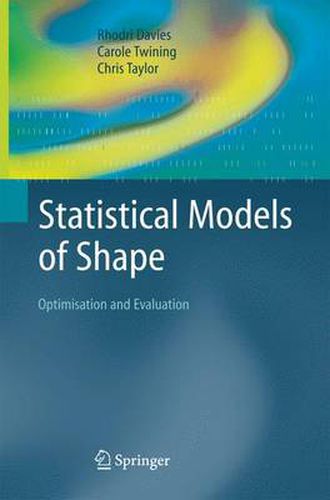Readings Newsletter
Become a Readings Member to make your shopping experience even easier.
Sign in or sign up for free!
You’re not far away from qualifying for FREE standard shipping within Australia
You’ve qualified for FREE standard shipping within Australia
The cart is loading…






This title is printed to order. This book may have been self-published. If so, we cannot guarantee the quality of the content. In the main most books will have gone through the editing process however some may not. We therefore suggest that you be aware of this before ordering this book. If in doubt check either the author or publisher’s details as we are unable to accept any returns unless they are faulty. Please contact us if you have any questions.
The goal of image interpretation is to convert raw image data into me- ingful information. Images are often interpreted manually. In medicine, for example, a radiologist looks at a medical image, interprets it, and tra- lates the data into a clinically useful form. Manual image interpretation is, however, a time-consuming, error-prone, and subjective process that often requires specialist knowledge. Automated methods that promise fast and - jective image interpretation have therefore stirred up much interest and have become a signi?cant area of research activity. Early work on automated interpretation used low-level operations such as edge detection and region growing to label objects in images. These can p- ducereasonableresultsonsimpleimages,butthepresenceofnoise,occlusion, andstructuralcomplexity oftenleadstoerroneouslabelling. Furthermore,- belling an object is often only the ?rst step of the interpretation process. In order to perform higher-level analysis, a priori information must be incor- rated into the interpretation process. A convenient way of achieving this is to use a ?exible model to encode information such as the expected size, shape, appearance, and position of objects in an image. The use of ?exible models was popularized by the active contour model, or ‘snake’ [98]. A snake deforms so as to match image evidence (e.g., edges) whilst ensuring that it satis?es structural constraints. However, a snake lacks speci?city as it has little knowledge of the domain, limiting its value in image interpretation.
$9.00 standard shipping within Australia
FREE standard shipping within Australia for orders over $100.00
Express & International shipping calculated at checkout
This title is printed to order. This book may have been self-published. If so, we cannot guarantee the quality of the content. In the main most books will have gone through the editing process however some may not. We therefore suggest that you be aware of this before ordering this book. If in doubt check either the author or publisher’s details as we are unable to accept any returns unless they are faulty. Please contact us if you have any questions.
The goal of image interpretation is to convert raw image data into me- ingful information. Images are often interpreted manually. In medicine, for example, a radiologist looks at a medical image, interprets it, and tra- lates the data into a clinically useful form. Manual image interpretation is, however, a time-consuming, error-prone, and subjective process that often requires specialist knowledge. Automated methods that promise fast and - jective image interpretation have therefore stirred up much interest and have become a signi?cant area of research activity. Early work on automated interpretation used low-level operations such as edge detection and region growing to label objects in images. These can p- ducereasonableresultsonsimpleimages,butthepresenceofnoise,occlusion, andstructuralcomplexity oftenleadstoerroneouslabelling. Furthermore,- belling an object is often only the ?rst step of the interpretation process. In order to perform higher-level analysis, a priori information must be incor- rated into the interpretation process. A convenient way of achieving this is to use a ?exible model to encode information such as the expected size, shape, appearance, and position of objects in an image. The use of ?exible models was popularized by the active contour model, or ‘snake’ [98]. A snake deforms so as to match image evidence (e.g., edges) whilst ensuring that it satis?es structural constraints. However, a snake lacks speci?city as it has little knowledge of the domain, limiting its value in image interpretation.